-
 Bitcoin
Bitcoin $105,615.5101
-1.70% -
 Ethereum
Ethereum $2,405.4595
-3.56% -
 Tether USDt
Tether USDt $1.0001
-0.02% -
 XRP
XRP $2.1728
-3.41% -
 BNB
BNB $646.9733
-1.79% -
 Solana
Solana $147.5744
-4.78% -
 USDC
USDC $0.9999
-0.01% -
 TRON
TRON $0.2797
-0.09% -
 Dogecoin
Dogecoin $0.1584
-4.51% -
 Cardano
Cardano $0.5427
-5.54% -
 Hyperliquid
Hyperliquid $37.0745
-6.61% -
 Bitcoin Cash
Bitcoin Cash $501.6174
-3.46% -
 Sui
Sui $2.6807
-3.86% -
 Chainlink
Chainlink $12.8618
-3.85% -
 UNUS SED LEO
UNUS SED LEO $8.9213
-1.73% -
 Avalanche
Avalanche $17.1447
-4.67% -
 Stellar
Stellar $0.2267
-5.16% -
 Toncoin
Toncoin $2.7869
-3.99% -
 Shiba Inu
Shiba Inu $0.0...01123
-2.11% -
 Litecoin
Litecoin $83.6709
-3.55% -
 Hedera
Hedera $0.1444
-4.30% -
 Monero
Monero $310.7502
-3.68% -
 Dai
Dai $1.0000
0.01% -
 Ethena USDe
Ethena USDe $1.0000
-0.01% -
 Polkadot
Polkadot $3.2760
-4.00% -
 Bitget Token
Bitget Token $4.4537
-1.97% -
 Uniswap
Uniswap $6.5603
-8.33% -
 Aave
Aave $260.3777
-5.62% -
 Pepe
Pepe $0.0...09300
-5.00% -
 Pi
Pi $0.4860
-3.15%
How to connect a Ledger or Trezor to MetaMask?
Connect your Ledger or Trezor to MetaMask via USB, ensuring firmware and apps are updated for secure dApp interactions.
Jul 02, 2025 at 12:56 am
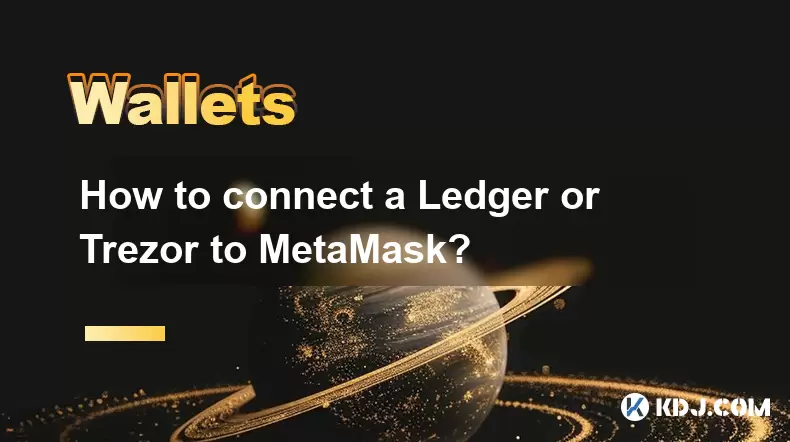
Understanding Hardware Wallets and MetaMask
Before diving into the connection process, it’s important to understand what a hardware wallet is and how it interacts with software wallets like MetaMask. A hardware wallet, such as Ledger or Trezor, is a physical device that securely stores your private keys offline, offering enhanced protection against online threats. MetaMask, on the other hand, is a browser extension and mobile wallet that allows users to interact with decentralized applications (dApps) on the Ethereum blockchain.
To use your Ledger or Trezor with MetaMask, you need to import your hardware wallet into MetaMask via USB. This process does not expose your private keys to the internet; instead, it uses a secure bridge to sign transactions locally on the hardware device.
Prerequisites for Connecting Ledger or Trezor
Before attempting to connect your hardware wallet to MetaMask, ensure the following prerequisites are met:
- You have the latest version of MetaMask installed as a browser extension.
- Your Ledger or Trezor device is updated to the latest firmware.
- The corresponding application for Ethereum (or other supported networks) is installed on your hardware wallet.
- You have your recovery phrase safely stored and accessible if needed.
- Your computer has a working USB port and internet access.
Failure to meet these requirements may result in connection issues or security vulnerabilities.
Connecting a Ledger Device to MetaMask
To connect a Ledger device to MetaMask, follow these steps carefully:
- Open MetaMask in your browser by clicking on the extension icon.
- Click on the profile icon in the top-right corner and select "Connect Wallet."
- In the list of wallet providers, locate and click on "Ledger."
- Follow the on-screen instructions to install the Ledger Live application if it's not already installed.
- Connect your Ledger device to your computer using the provided USB cable.
- Unlock your Ledger device and open the Ethereum app (or the relevant network app).
- Allow the connection when prompted on your Ledger screen.
- MetaMask will detect your Ledger and begin importing your accounts.
- Select the number of accounts you wish to import (usually one is sufficient unless you're managing multiple addresses).
Once this process is complete, your Ledger account(s) will appear in MetaMask, and you’ll be able to interact with dApps while keeping your keys secure on the hardware device.
Connecting a Trezor Device to MetaMask
The process for connecting a Trezor device to MetaMask is similar but involves a different set of steps:
- Ensure the Trezor Suite software is installed and running on your computer.
- Launch MetaMask and click on the profile icon, then choose "Connect Wallet."
- From the available options, select "Trezor."
- Connect your Trezor device to your computer via USB.
- Unlock your Trezor using your PIN.
- Open the Ethereum app (or another supported blockchain app) directly on the Trezor device.
- When prompted, confirm the connection on the Trezor screen.
- MetaMask will now recognize your Trezor and start importing your wallet address.
- Choose how many accounts you'd like to import from your Trezor.
After completing these steps, your Trezor wallet will be successfully linked to MetaMask, allowing you to manage assets and interact with decentralized platforms securely.
Common Issues and Troubleshooting Tips
Despite following the correct procedures, users may encounter issues when trying to connect their Ledger or Trezor to MetaMask. Some common problems include:
- Device Not Detected: Ensure your hardware wallet is properly connected via USB and recognized by your computer. Try switching USB ports or cables.
- App Not Installed on Device: Check that the Ethereum app (or relevant blockchain app) is installed on your hardware wallet through its official manager (e.g., Ledger Live or Trezor Suite).
- Outdated Firmware or Software: Update both your hardware wallet firmware and the associated desktop apps to the latest versions.
- Browser Permissions: Confirm that MetaMask has permission to access USB devices. This can usually be adjusted in your browser settings under site permissions.
- Multiple Accounts Displayed Incorrectly: If you're seeing unexpected balances or accounts, try disconnecting and reconnecting your wallet or clearing the cache in MetaMask.
If all else fails, consult the official support documentation for Ledger or Trezor, or reach out to their customer service teams for further assistance.
Frequently Asked Questions
Can I use multiple hardware wallets with MetaMask at the same time?
Yes, MetaMask supports simultaneous connections with multiple hardware wallets. You can switch between them within the wallet interface by selecting the appropriate account.
Is it safe to connect my hardware wallet to MetaMask?
Connecting your Ledger or Trezor to MetaMask is considered safe because your private keys never leave the hardware wallet. All transaction signing occurs locally on the device itself.
Do I need to keep my hardware wallet plugged in after connecting it to MetaMask?
You only need to keep your hardware wallet connected when signing transactions or approving actions. Once signed, you can disconnect it without affecting your MetaMask session.
Can I send tokens from my hardware wallet through MetaMask?
Yes, once connected, you can send and receive tokens directly from your hardware wallet using the MetaMask interface. Just ensure your hardware wallet is unlocked and the correct app is open during the transaction.
Disclaimer:info@kdj.com
The information provided is not trading advice. kdj.com does not assume any responsibility for any investments made based on the information provided in this article. Cryptocurrencies are highly volatile and it is highly recommended that you invest with caution after thorough research!
If you believe that the content used on this website infringes your copyright, please contact us immediately (info@kdj.com) and we will delete it promptly.
- Michael Saylor, Bitcoin, and $500 Million: A Winning Strategy?
- 2025-07-02 08:30:12
- Toncoin's Telegram Takeover: Price Predictions and the Power of Utility
- 2025-07-02 09:10:12
- USDC Mining & Cloud Mining: Unlocking Daily Rewards in 2025
- 2025-07-02 09:15:12
- XRP, Cloud Mining, and the 2025 Market: A New Yorker's Take
- 2025-07-02 08:30:12
- Arctic Pablo Coin: Is This Meme Coin the Key to 100x ROI Investing?
- 2025-07-02 08:50:12
- Ripple (XRP) and Crypto Portfolio Rescue: Is Bitcoin Solaris the Answer?
- 2025-07-02 09:30:13
Related knowledge
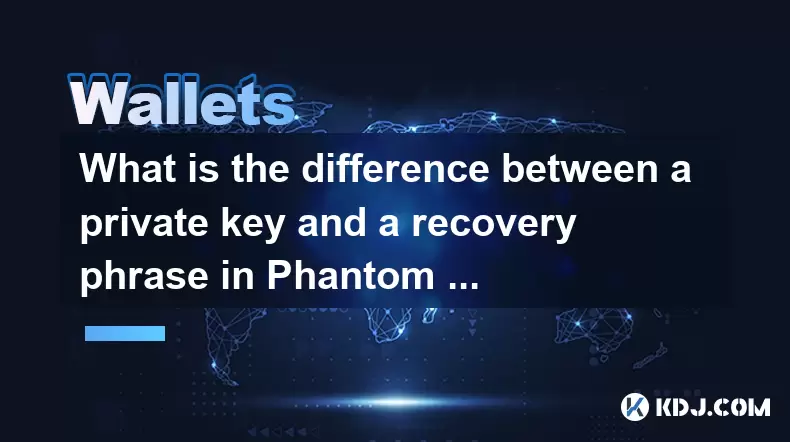
What is the difference between a private key and a recovery phrase in Phantom wallet?
Jul 02,2025 at 09:57am
Understanding the Basics of Phantom WalletPhantom wallet is a non-custodial digital wallet primarily used for interacting with the Solana blockchain. It allows users to store, send, and receive SOL tokens and other digital assets like NFTs. Non-custodial means that the user retains full control over their private keys and recovery phrases. Understanding...
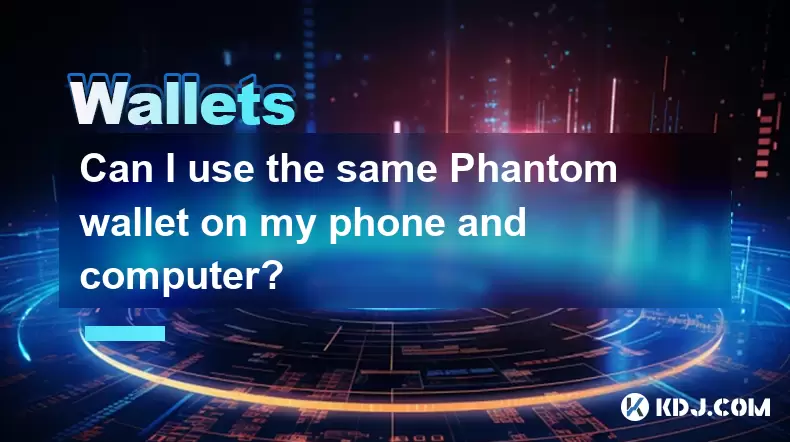
Can I use the same Phantom wallet on my phone and computer?
Jul 02,2025 at 10:04am
Phantom Wallet: Cross-Device CompatibilityPhantom wallet is a non-custodial cryptocurrency wallet designed primarily for interacting with the Solana blockchain. It supports both browser extensions and mobile applications, making it versatile for users who want to manage their digital assets across multiple devices. One of the most common questions among...
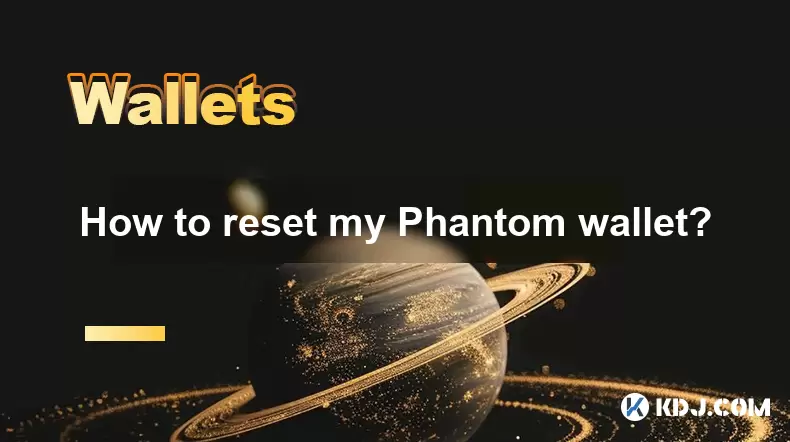
How to reset my Phantom wallet?
Jul 02,2025 at 12:36am
Understanding the Need for Resetting Your Phantom WalletIf you're using a Phantom wallet, you may encounter situations where resetting your wallet becomes necessary. This could be due to forgotten passwords, seed phrase issues, or account corruption. Phantom is a non-custodial wallet primarily used for interacting with the Solana blockchain, and it stor...
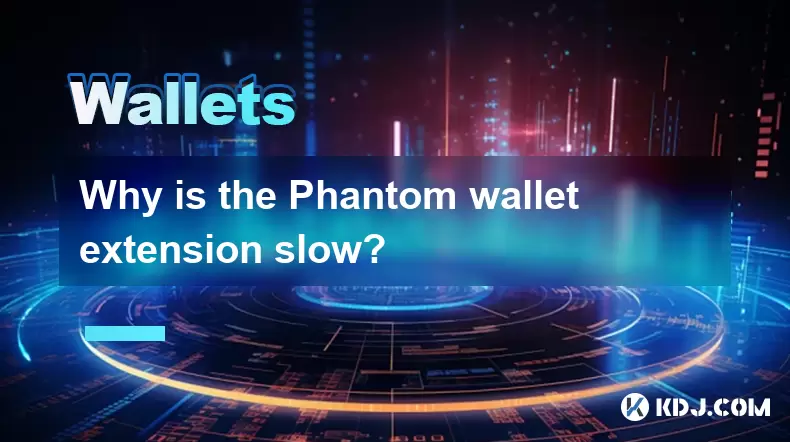
Why is the Phantom wallet extension slow?
Jul 02,2025 at 04:15am
Phantom Wallet Extension: Why Is It Slow?Phantom wallet is a widely used browser extension for interacting with decentralized applications (dApps) on the Solana blockchain. Despite its popularity, some users report that the Phantom wallet extension runs slowly at times. This article delves into potential reasons behind this performance issue and provide...
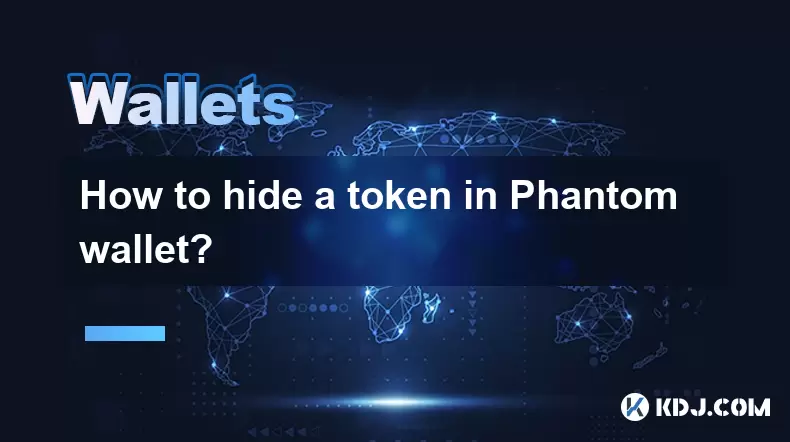
How to hide a token in Phantom wallet?
Jul 01,2025 at 05:49pm
Understanding the Phantom Wallet InterfacePhantom wallet is a popular non-custodial wallet used primarily for interacting with the Solana blockchain. It allows users to store, send, receive, and manage various tokens, including both fungible and non-fungible tokens (NFTs). Before attempting to hide a token, it's essential to understand how the wallet in...
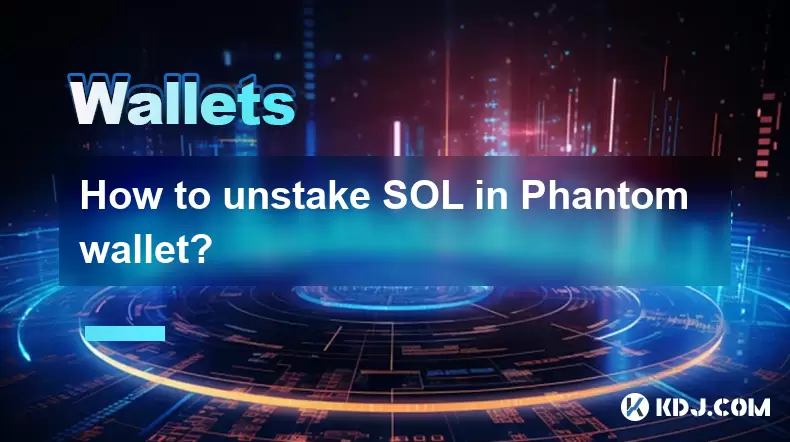
How to unstake SOL in Phantom wallet?
Jul 02,2025 at 06:49am
What Is Staking SOL in Phantom Wallet?Staking SOL involves locking up your SOL tokens to support the Solana network and earn rewards. The Phantom wallet, a popular non-custodial wallet for Solana, allows users to stake their SOL directly from the interface. When you stake SOL, it becomes temporarily unavailable as it is delegated to a validator. This pr...

What is the difference between a private key and a recovery phrase in Phantom wallet?
Jul 02,2025 at 09:57am
Understanding the Basics of Phantom WalletPhantom wallet is a non-custodial digital wallet primarily used for interacting with the Solana blockchain. It allows users to store, send, and receive SOL tokens and other digital assets like NFTs. Non-custodial means that the user retains full control over their private keys and recovery phrases. Understanding...

Can I use the same Phantom wallet on my phone and computer?
Jul 02,2025 at 10:04am
Phantom Wallet: Cross-Device CompatibilityPhantom wallet is a non-custodial cryptocurrency wallet designed primarily for interacting with the Solana blockchain. It supports both browser extensions and mobile applications, making it versatile for users who want to manage their digital assets across multiple devices. One of the most common questions among...

How to reset my Phantom wallet?
Jul 02,2025 at 12:36am
Understanding the Need for Resetting Your Phantom WalletIf you're using a Phantom wallet, you may encounter situations where resetting your wallet becomes necessary. This could be due to forgotten passwords, seed phrase issues, or account corruption. Phantom is a non-custodial wallet primarily used for interacting with the Solana blockchain, and it stor...

Why is the Phantom wallet extension slow?
Jul 02,2025 at 04:15am
Phantom Wallet Extension: Why Is It Slow?Phantom wallet is a widely used browser extension for interacting with decentralized applications (dApps) on the Solana blockchain. Despite its popularity, some users report that the Phantom wallet extension runs slowly at times. This article delves into potential reasons behind this performance issue and provide...

How to hide a token in Phantom wallet?
Jul 01,2025 at 05:49pm
Understanding the Phantom Wallet InterfacePhantom wallet is a popular non-custodial wallet used primarily for interacting with the Solana blockchain. It allows users to store, send, receive, and manage various tokens, including both fungible and non-fungible tokens (NFTs). Before attempting to hide a token, it's essential to understand how the wallet in...

How to unstake SOL in Phantom wallet?
Jul 02,2025 at 06:49am
What Is Staking SOL in Phantom Wallet?Staking SOL involves locking up your SOL tokens to support the Solana network and earn rewards. The Phantom wallet, a popular non-custodial wallet for Solana, allows users to stake their SOL directly from the interface. When you stake SOL, it becomes temporarily unavailable as it is delegated to a validator. This pr...
See all articles

























































































